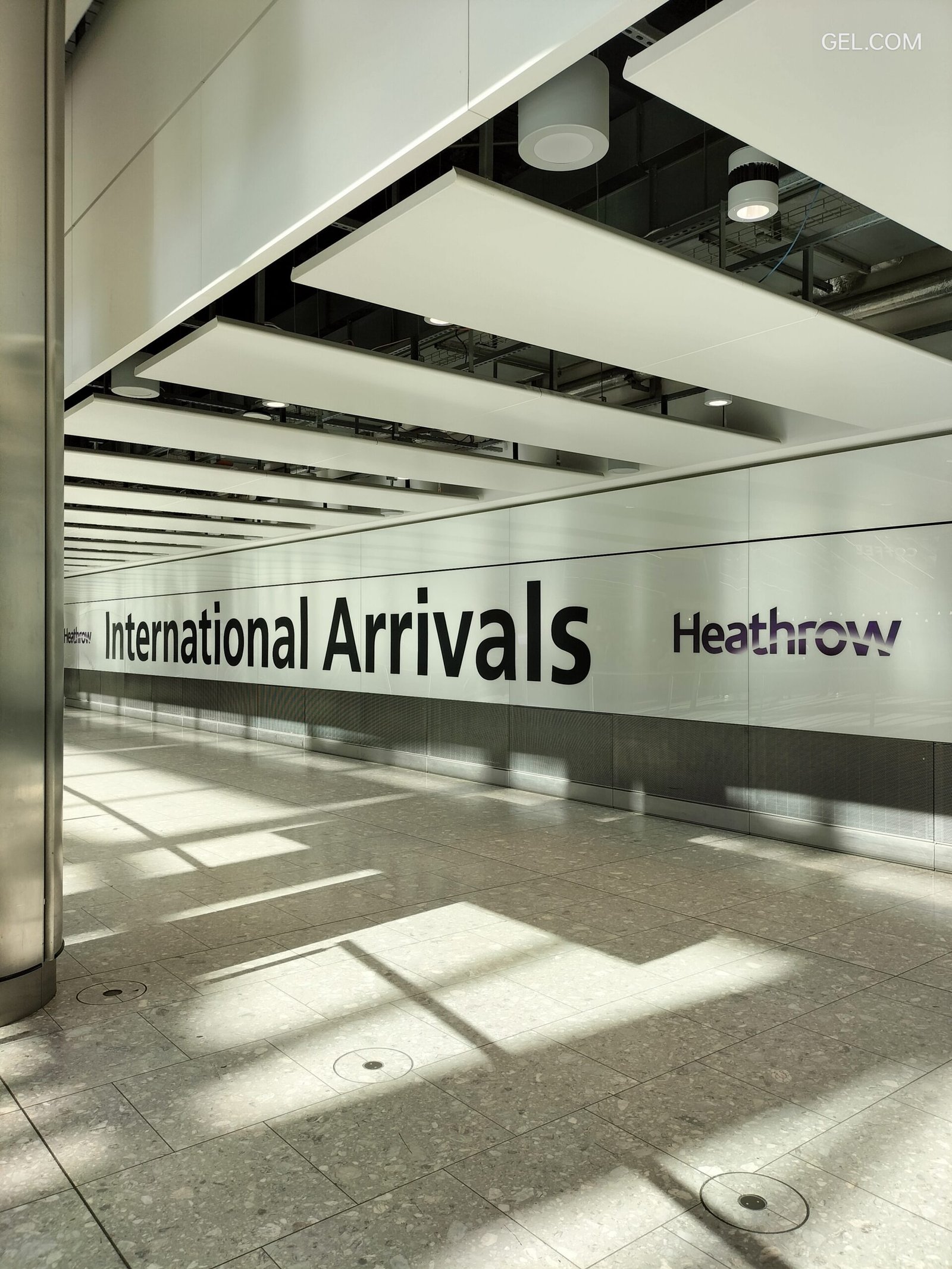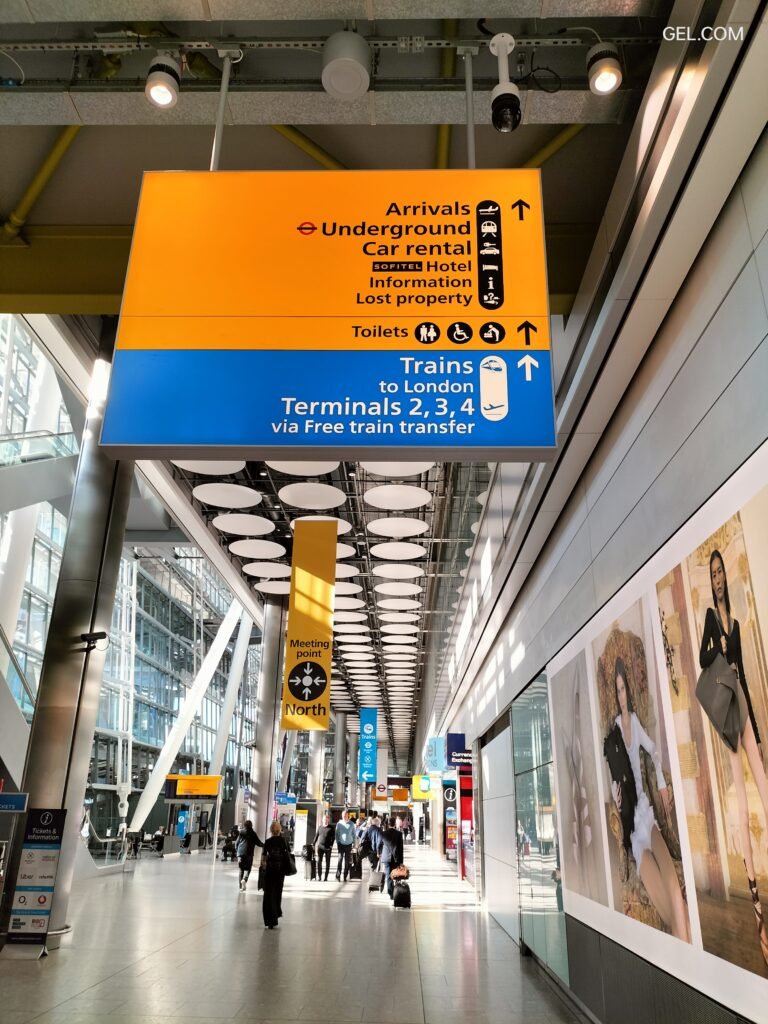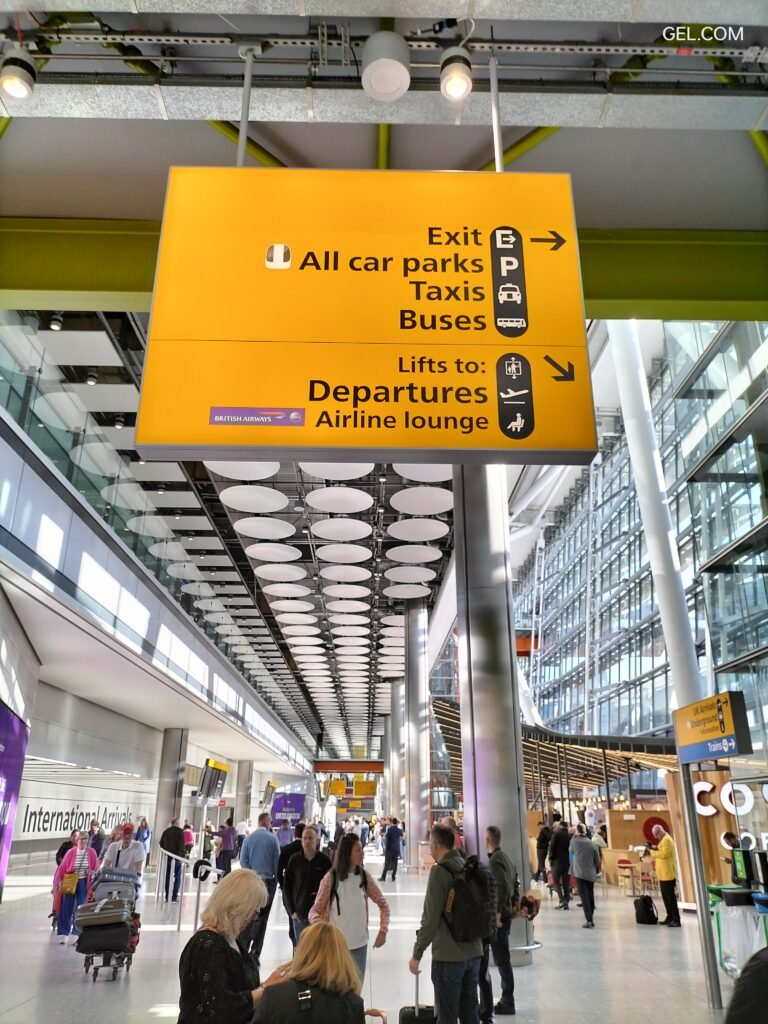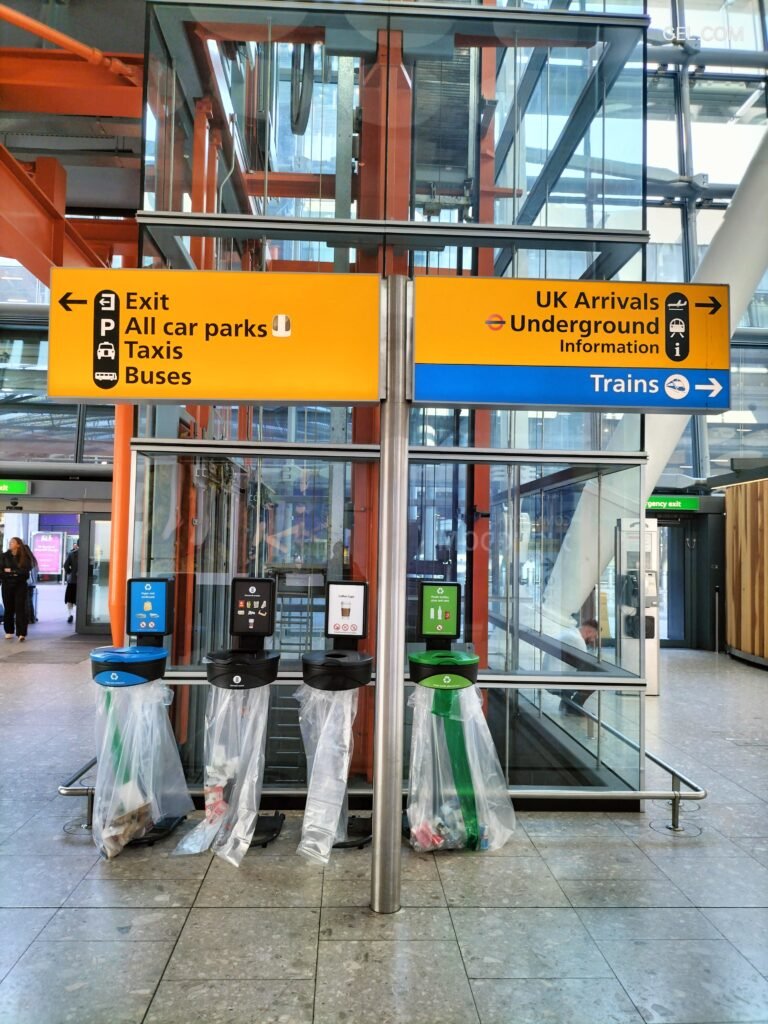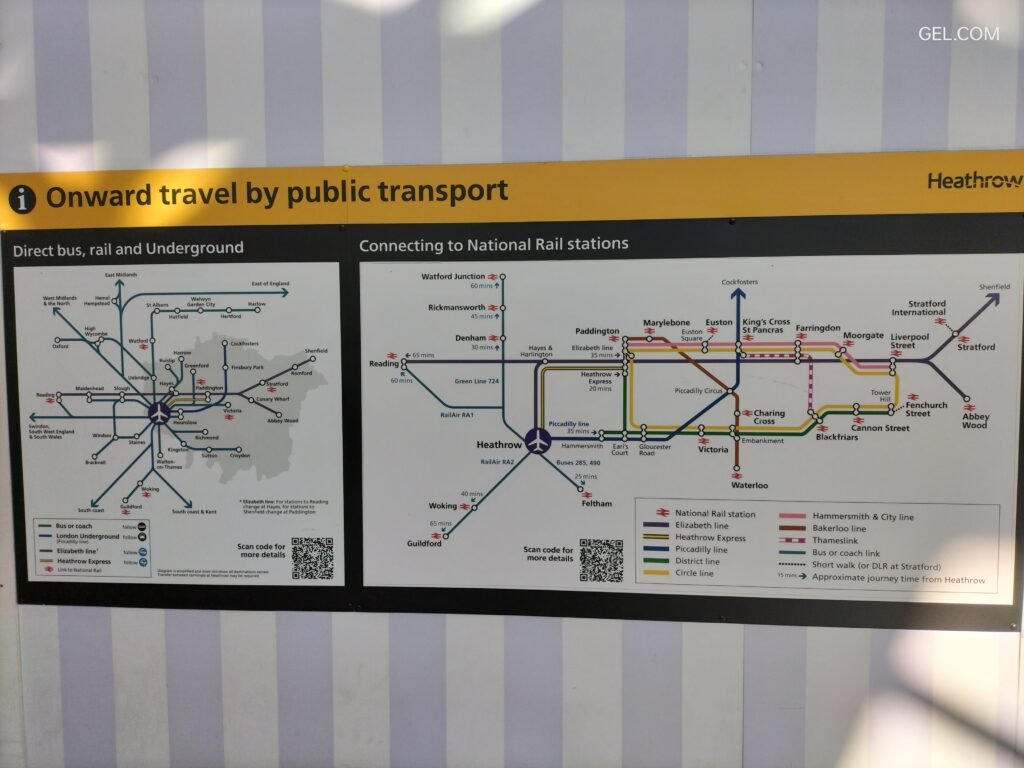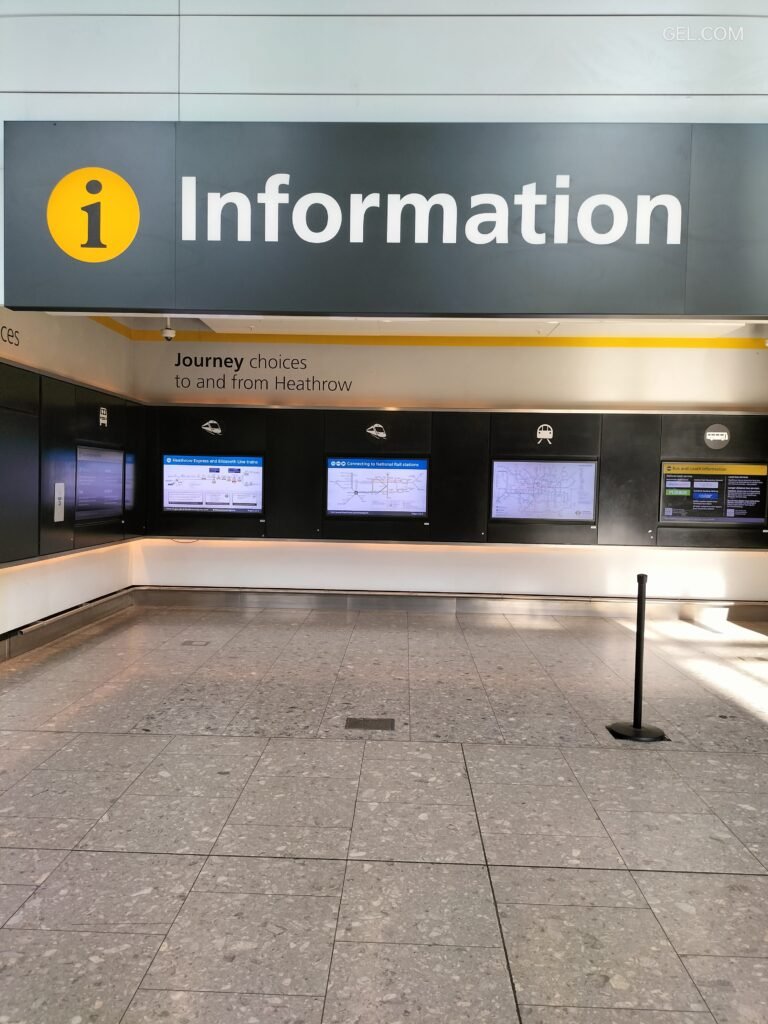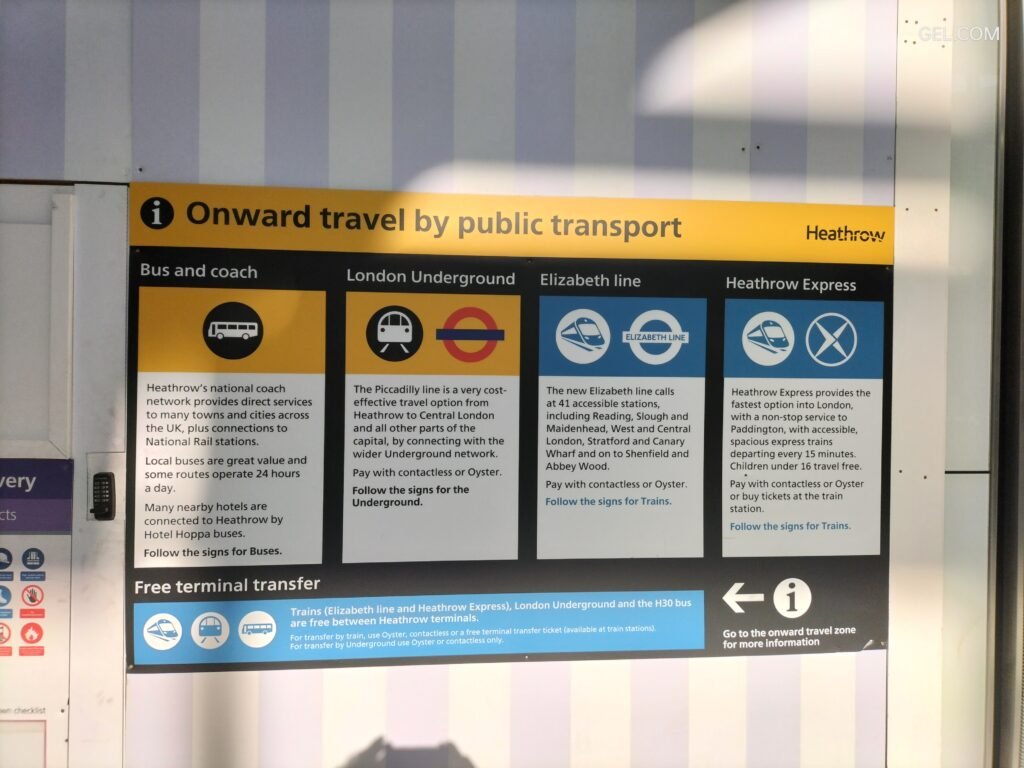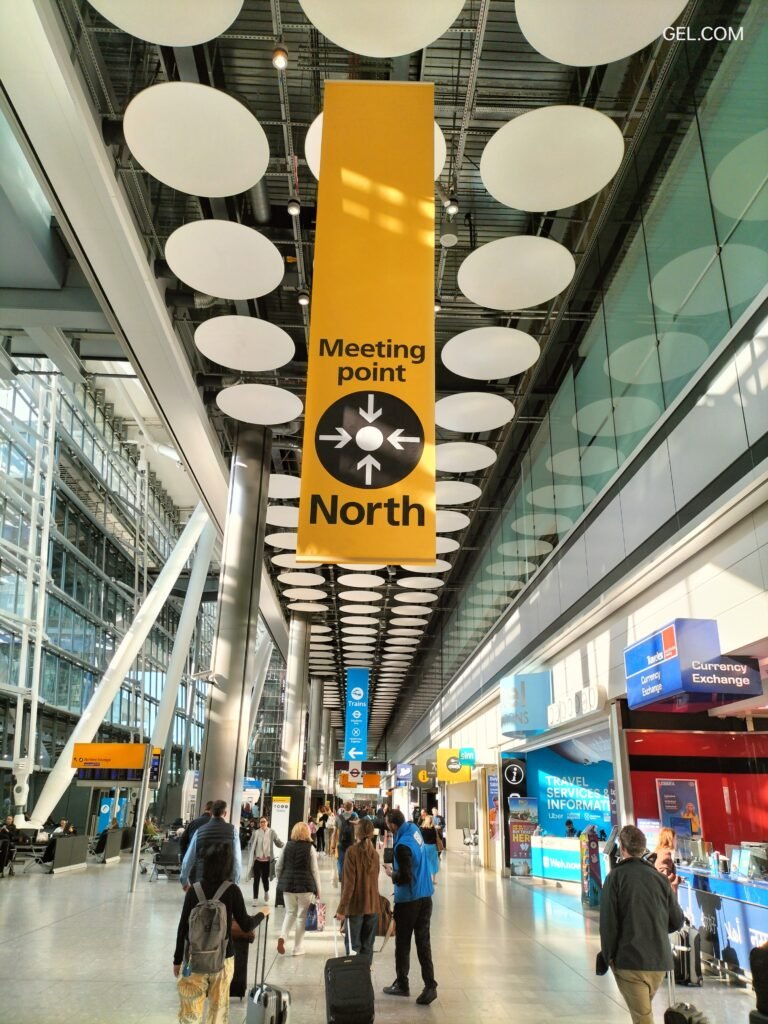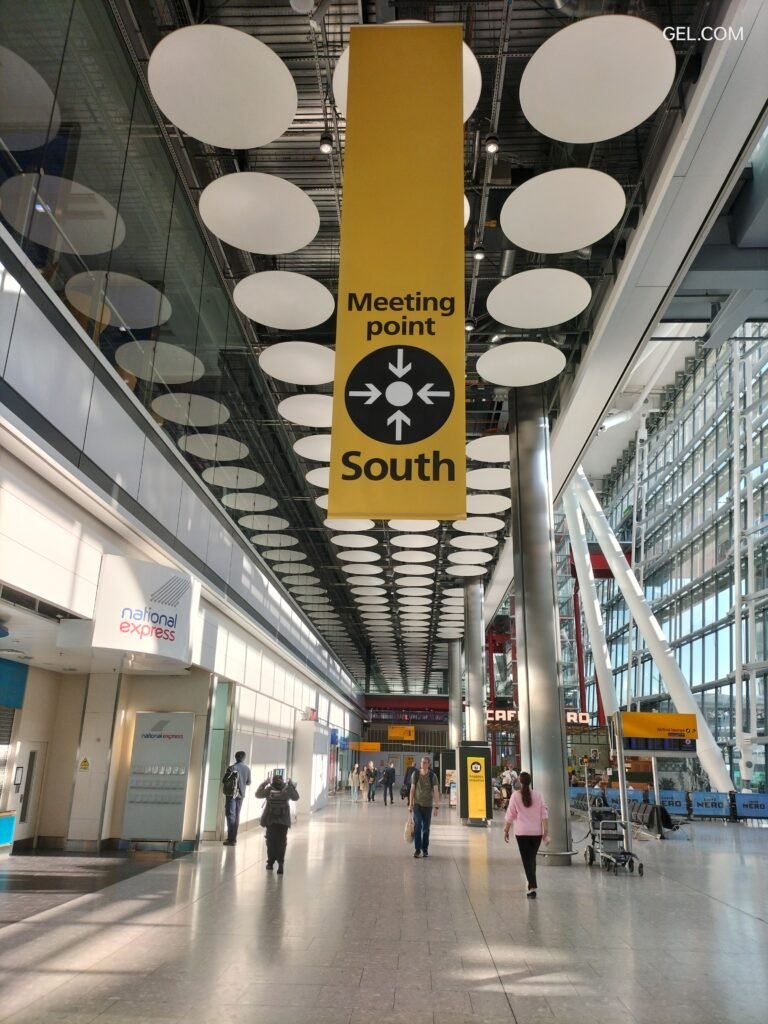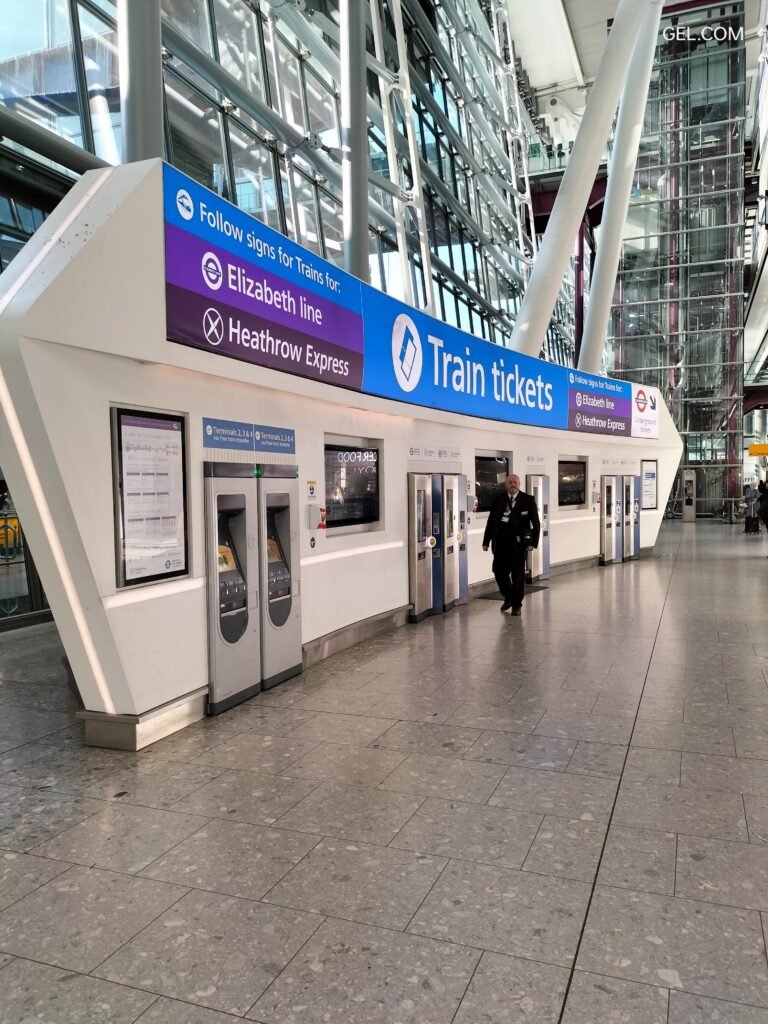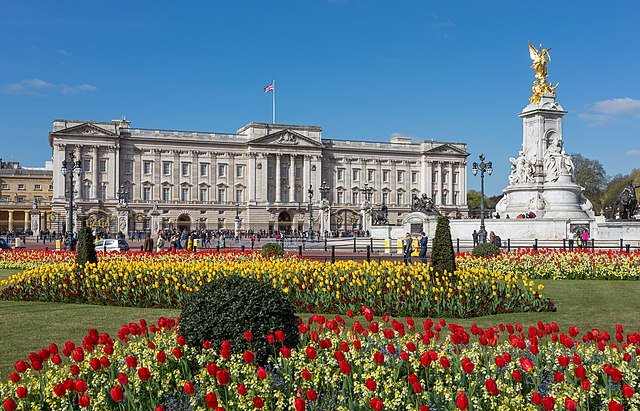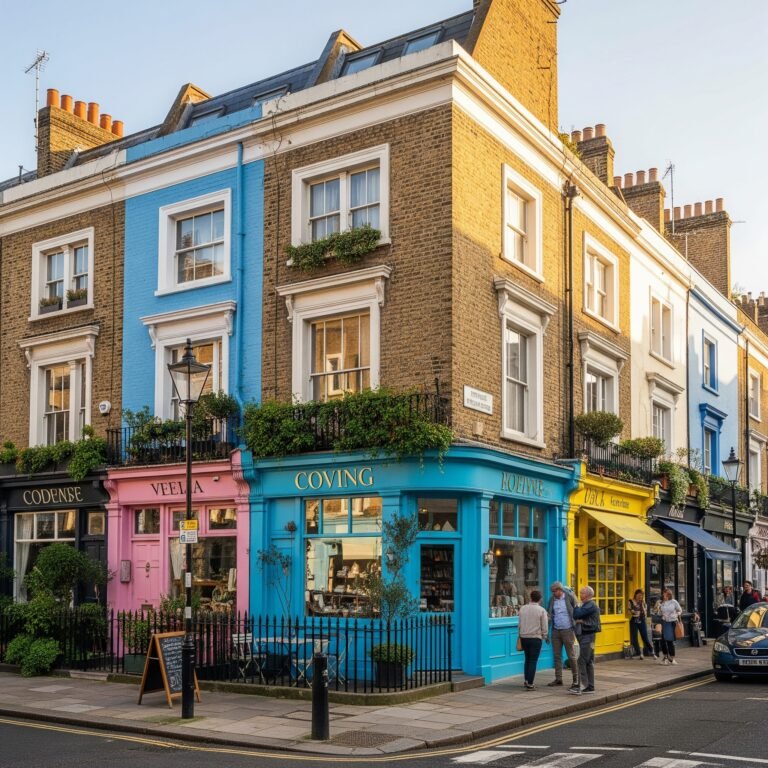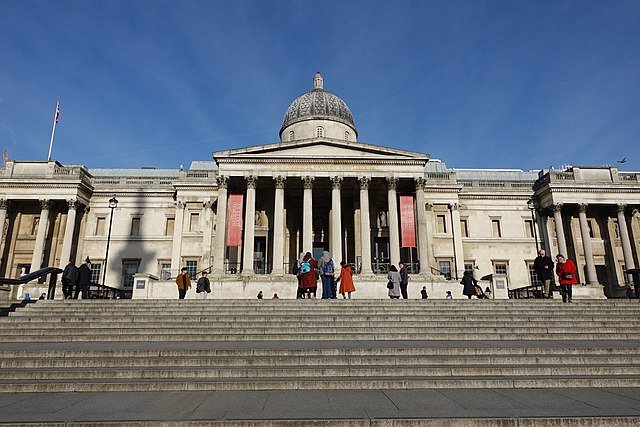BEST WAY FROM HEATHROW TO LONDON
For millions of travellers each year, Heathrow Airport serves as the primary gateway to London. Navigating from this bustling international hub to the heart of the capital can seem daunting, but thankfully, a comprehensive network of transport options caters to every budget and preference. From rapid rail links to the quintessential black cab, and from economical buses to convenient ride-sharing services, getting to Central London is a well-oiled machine.
Where Am I?
The general arrival process at all four operational terminals at London Heathrow (Terminals 2, 3, 4, and 5) is largely the same, but the specifics of an onward connection can vary depending on whether you are staying in the same terminal or transferring to a different one.
Not sure which terminal your airline arrives/departs , visit my post linked below. This is purely a guide, the definitive information will be on your ticket/boarding card.
Arriving London, Which Airport?
Please remember, Heathrow is a very large complex, with terminals on different parts of the perimeter. If transferring/changing terminals for any reason, or for gates that are distant from check in/transfer, i.e Terminal 5, planning is essential, allowing an extra 60 minutes to your schedule. Full details of your flight arrival/departure terminal will be on your ticket/boarding card. Further information visit Heathrow .com
Upon landing, the fundamental steps are consistent:
- Follow the signs: Once you disembark, you will follow the signs to either “Arrivals/Baggage Reclaim” (yellow signs) or “Flight Connections” (purple signs).
- Passport Control/Immigration: All passengers must go through this step. For eligible travelers with a biometric passport, eGates offer a faster process. If not, you will need to see a Border Force Officer.
- Baggage Reclaim: If your final destination is Heathrow and you have checked bags, you will proceed to the baggage carousels. If you have a connecting flight on a single ticket, your bags are usually checked through to your final destination, and you will not need to reclaim them.
- Customs: After collecting your bags (if applicable), you will pass through customs before entering the public arrivals hall.
Onward Connections:
The process for an onward connection is different and is guided by the distinctive purple “Flight Connections” signs.
- Same Terminal Connection: If your connecting flight is from the same terminal, you will follow the purple signs to a dedicated connections security area. After clearing security, you will be in the departures lounge and can find your gate on the information screens.
- Terminal Transfer: If your onward flight is from a different terminal, you will follow the purple “Flight Connections” signs, which will direct you to the free inter-terminal transfer services. This can be via a shuttle bus (airside, so you don’t have to go through arrivals and security again) or a train. The transfer process is well-signposted, but it’s crucial to know which terminal you’re transferring to. Terminals 2 and 3 are connected by a pedestrian walkway, while transfers to Terminals 4 and 5 require a bus or train journey.
In essence, while the initial arrival process of disembarking and following signs is universal, the path for an onward connection diverges significantly depending on your destination terminal. The airport’s clear signage is designed to guide you through the correct path, whether you are leaving the airport or catching another flight.
Look up for Directions
Once you clear customs and enter the arrivals hall, a sudden influx of information can be overwhelming – crowds, noise, and numerous signs competing for your attention. This is precisely the moment to take a deep breath and resist the urge to rush. Before making any snap decisions about your onward journey, resist the natural inclination to immediately scan at eye level. Instead, make sure to look up.
Not Sure What To Do?
If, despite looking up at the signs, you find yourself unsure about where to go or how to get to Central London from Heathrow, don’t panic. Heathrow Airport is exceptionally well-staffed and designed to assist bewildered travellers. Look for uniformed airport staff – often identifiable by their distinct Heathrow uniforms or high-visibility vests – who are trained to provide guidance and answer questions about all onward travel options.
Alternatively, head towards one of the clearly marked Information Desks, usually found prominently in the arrivals halls of each terminal. These desks are staffed by knowledgeable personnel who can provide detailed directions, advise on the best transport method for your specific destination and budget, help with ticket purchases, and even assist with connecting to special assistance if needed. Remember, asking for help is always the quickest and most stress-free way to resolve any uncertainty.
Meeting Somone
If you’re meeting someone at Heathrow Arrivals, it’s best to pre-arrange a specific meeting point to avoid the often-chaotic scrum right outside the customs barriers. Rather than waiting directly at the exit, which can become incredibly congested, suggest meeting at one of the designated North or South Meeting Point areas.
These spots are clearly signed overhead and are usually slightly removed from the immediate flow of newly arrived passengers, offering a bit more space and less foot traffic. Deciding on “North or South” beforehand will make for a much smoother and less stressful reunion, allowing you both to spot each other easily amidst the hustle and bustle.
BEST WAY FROM HEATHROW TO LONDON
Rail Routes: Speed, Efficiency, and Connectivity
London’s rail network offers some of the quickest and most popular ways to reach the city centre from Heathrow. Two main train services and the London Underground provide distinct advantages.
Heathrow Express:
For those prioritising speed and comfort, the Heathrow Express is unmatched. This premium non-stop service whisks passengers from Heathrow Terminals 2 & 3 (Heathrow Central) and Terminal 5 directly to London Paddington Station in a mere 15-20 minutes. Trains depart every 15 minutes, making it a highly convenient option, especially for business travellers or those with limited time.
- Pros: Fastest journey, dedicated luggage space, comfortable seating, frequent departures.
- Cons: Most expensive option, only goes to Paddington, requiring a further journey to most central London destinations.
- Tickets: Tickets can be purchased online in advance (often offering significant discounts, particularly for off-peak or advance purchase), via the Heathrow Express app, or at self-service ticket machines and ticket offices located in the arrivals halls and at the station platforms at Heathrow. Contactless payment or Oyster cards can also be used directly at the gate, though advance online booking is usually cheaper.
Elizabeth Line (Crossrail):
London’s newest railway, the Elizabeth Line, offers a fantastic balance of speed, cost, and connectivity. It connects Heathrow (serving Terminals 2 & 3, 4, and 5) to Paddington and then continues through central London, with key stops including Bond Street, Tottenham Court Road, Farringdon, and Liverpool Street, extending all the way to Abbey Wood in the east. A journey to central London can take under 45 minutes, with trains typically running every 30 minutes from Heathrow.
- Pros: Good balance of speed and cost, direct connections to many central London locations, comfortable, air-conditioned trains, step-free access at all stations.
- Cons: Not as fast as Heathrow Express to Paddington, fewer direct trains to Terminal 4 and 5 compared to Terminals 2 & 3.
- Tickets: The easiest and often cheapest way to pay is by using a contactless debit/credit card or an Oyster card directly at the ticket gates. Fares are capped, so you won’t pay more than a certain amount for daily travel. Single journey paper tickets can also be purchased from the self-service ticket machines in the arrivals halls and at the stations.
London Underground (Piccadilly Line):
The iconic “Tube” offers the most budget-friendly rail option for getting from Heathrow to Central London. The Piccadilly Line serves all Heathrow terminals (Terminals 2 & 3, 4, and 5) and provides a direct route into central London, stopping at popular areas like South Kensington, Piccadilly Circus, Leicester Square, and Covent Garden. While it’s the slowest rail option, taking approximately 50-60 minutes to reach central London, it’s highly cost-effective.
- Pros: Most affordable rail option, direct access to numerous central London locations without needing to change, frequent services.
- Cons: Longer journey time, can be crowded, especially during peak hours, limited luggage space.
- Tickets: As with the Elizabeth Line, the most convenient way to pay is by tapping in and out with a contactless debit/credit card or an Oyster card. This ensures you get the best fare and daily capping benefits. Single paper tickets are also available from self-service machines in the arrivals halls and at the Underground stations.
BEST WAY FROM HEATHROW TO LONDON
Road Transport: Convenience and Door-to-Door Service
For those preferring a direct, door-to-door service or travelling with significant luggage, road transport options offer convenience, albeit often at a higher cost.
Black Cabs (London Taxis):
The instantly recognisable London black cab offers a quintessential British experience and unparalleled convenience. You can hail a black cab directly from designated taxi ranks outside each Heathrow terminal. Drivers are licensed, knowledgeable about London’s streets, and the cabs are designed to accommodate luggage.
- Pros: Door-to-door service, drivers are “The Knowledge” trained, comfortable and spacious, no need to pre-book.
- Cons: Most expensive transport option, journey time is highly dependent on traffic, especially during peak hours (can be 30-60 minutes or more).
- Fares: Fares are metered, but expect to pay between £42 and £80 for a journey to Central London, depending on your exact destination, time of day (tariffs change), and traffic. There’s often a small surcharge for airport pick-ups. You can pay by cash or card.
Uber and Ride-Sharing Services:
Uber and other ride-sharing apps (like Bolt or Free Now) provide a popular alternative to black cabs. You book your ride through the app, and a driver will meet you at a designated pick-up point at the terminal. Prices are usually displayed upfront in the app, allowing for cost transparency.
- Pros: Often cheaper than a black cab, convenient booking via app, various vehicle options (UberX, UberXL, Uber Comfort, etc.), real-time tracking of your driver.
- Cons: Can be subject to surge pricing during high demand, pick-up points might require a short walk, journey time is dependent on traffic.
- Fares: An UberX ride to Central London typically ranges from £35 to £65, but this can fluctuate significantly with surge pricing. Airport surcharges and tolls may also be added to the fare. Payment is handled through the app.
National Express Coaches:
For a more economical road transport option, National Express coaches operate frequent services from Heathrow Central Bus Station (serving Terminals 2 & 3, with shuttle connections to other terminals) to London Victoria Coach Station. The journey typically takes between 40 minutes and an hour, depending on traffic.
- Pros: Very affordable, especially if booked in advance, comfortable seating, good for those with lots of luggage, direct to Victoria Coach Station which has excellent onward connections.
- Cons: Slower than rail options, journey time susceptible to traffic delays, Victoria Coach Station might not be the most convenient final destination for all travellers.
- Tickets: Tickets can be purchased online in advance from the National Express website (often the cheapest), at the National Express ticket office at Heathrow Central Bus Station, or directly from the driver (though this is often more expensive and subject to availability).
Local Buses (TfL):
While less common for direct journeys to Central London, local Transport for London (TfL) buses operate from Heathrow. These are primarily useful for shorter distances or connecting to specific Tube or Overground stations that aren’t directly served by the Piccadilly or Elizabeth lines.
BEST WAY FROM HEATHROW TO LONDON
Getting Your Tickets: The New Self-Service Experience
One of the most welcome recent improvements for arriving passengers at Heathrow is the increased availability and prominence of self-service ticket machines in the arrivals halls. This streamlines the process of buying tickets for rail services, reducing queues and making it easier for first-time visitors.
- Location: Upon exiting customs and entering the arrivals hall of your respective terminal (Terminals 2, 3, 4, or 5), you will find clearly signposted self-service ticket machines for the Heathrow Express, Elizabeth Line, and London Underground. These machines are usually located near the entrances to the train stations or in prominent areas of the arrivals hall.
- Functionality: These modern machines are multilingual and user-friendly. You can select your destination, choose your ticket type (single, return, or Travelcard for the Tube/Elizabeth Line), and pay using major credit or debit cards, including contactless payment. For Oyster cards, you can purchase a new card and top it up at these machines.
- Benefits:
- Convenience: No need to queue at a ticket office.
- Speed: Quick and efficient transaction process.
- Choice: Access to various ticket types and payment methods.
- Information: Machines often display fare information and journey times.
- Assistance: While the machines are designed for ease of use, staff are typically on hand nearby to offer assistance if you encounter any difficulties.
Which Option is Right for You?
The “best” way to get from Heathrow to Central London depends entirely on your priorities:
- Speed is paramount: Heathrow Express.
- Balance of speed and cost with direct connections: Elizabeth Line.
- Budget-conscious and direct to many central locations: London Underground (Piccadilly Line).
- Door-to-door convenience and comfort (budget allowing): Black Cab.
- Cost-effective door-to-door with app-based booking: Uber/Ride-sharing.
- Economical road travel, ideal for heavy luggage or specific destinations: National Express coach.
For millions of travellers each year, Heathrow Airport serves as the primary gateway to London. Navigating from this bustling international hub to the heart of the capital can seem daunting, but thankfully, a comprehensive network of transport options caters to every budget and preference. From rapid rail links to the quintessential black cab, and from economical buses to convenient ride-sharing services, getting to Central London is a well-oiled machine.
BEST WAY FROM HEATHROW TO LONDON
Rail Routes: Speed, Efficiency, and Connectivity
London’s rail network offers some of the quickest and most popular ways to reach the city centre from Heathrow. Two main train services and the ubiquitous London Underground provide distinct advantages.
1. Heathrow Express: For those prioritising speed and comfort, the Heathrow Express is unmatched. This premium non-stop service whisks passengers from Heathrow Terminals 2 & 3 (Heathrow Central) and Terminal 5 directly to London Paddington Station in a mere 15-20 minutes. Trains depart every 15 minutes, making it a highly convenient option, especially for business travellers or those with limited time.
- Pros: Fastest journey, dedicated luggage space, comfortable seating, frequent departures.
- Cons: Most expensive option, only goes to Paddington, requiring a further journey to most central London destinations.
- Tickets: Tickets can be purchased online in advance (often offering significant discounts, particularly for off-peak or advance purchase), via the Heathrow Express app, or at self-service ticket machines and ticket offices located in the arrivals halls and at the station platforms at Heathrow. Contactless payment or Oyster cards can also be used directly at the gate, though advance online booking is usually cheaper.
2. Elizabeth Line (Crossrail): London’s newest railway, the Elizabeth Line, offers a fantastic balance of speed, cost, and connectivity. It connects Heathrow (serving Terminals 2 & 3, 4, and 5) to Paddington and then continues through central London, with key stops including Bond Street, Tottenham Court Road, Farringdon, and Liverpool Street, extending all the way to Abbey Wood in the east. A journey to central London can take under 45 minutes, with trains typically running every 30 minutes from Heathrow.
- Pros: Good balance of speed and cost, direct connections to many central London locations, comfortable, air-conditioned trains, step-free access at all stations.
- Cons: Not as fast as Heathrow Express to Paddington, fewer direct trains to Terminal 4 and 5 compared to Terminals 2 & 3.
- Tickets: The easiest and often cheapest way to pay is by using a contactless debit/credit card or an Oyster card directly at the ticket gates. Fares are capped, so you won’t pay more than a certain amount for daily travel. Single journey paper tickets can also be purchased from the self-service ticket machines in the arrivals halls and at the stations.
3. London Underground (Piccadilly Line): The iconic “Tube” offers the most budget-friendly rail option for getting from Heathrow to Central London. The Piccadilly Line serves all Heathrow terminals (Terminals 2 & 3, 4, and 5) and provides a direct route into central London, stopping at popular areas like South Kensington, Piccadilly Circus, Leicester Square, and Covent Garden. While it’s the slowest rail option, taking approximately 50-60 minutes to reach central London, it’s highly cost-effective.
- Pros: Most affordable rail option, direct access to numerous central London locations without needing to change, frequent services.
- Cons: Longer journey time, can be crowded, especially during peak hours, limited luggage space.
- Tickets: As with the Elizabeth Line, the most convenient way to pay is by tapping in and out with a contactless debit/credit card or an Oyster card. This ensures you get the best fare and daily capping benefits. Single paper tickets are also available from self-service machines in the arrivals halls and at the Underground stations.
Road Transport: Convenience and Door-to-Door Service
For those preferring a direct, door-to-door service or travelling with significant luggage, road transport options offer convenience, albeit often at a higher cost.
1. Black Cabs (London Taxis): The instantly recognisable London black cab offers a quintessential British experience and unparalleled convenience. You can hail a black cab directly from designated taxi ranks outside each Heathrow terminal. Drivers are licensed, knowledgeable about London’s streets, and the cabs are designed to accommodate luggage.
- Pros: Door-to-door service, drivers are “The Knowledge” trained, comfortable and spacious, no need to pre-book.
- Cons: Most expensive transport option, journey time is highly dependent on traffic, especially during peak hours (can be 30-60 minutes or more).
- Fares: Fares are metered, but expect to pay between £42 and £80 for a journey to Central London, depending on your exact destination, time of day (tariffs change), and traffic. There’s often a small surcharge for airport pick-ups. You can pay by cash or card.
2. Uber and Ride-Sharing Services: Uber and other ride-sharing apps (like Bolt or Free Now) provide a popular alternative to black cabs. You book your ride through the app, and a driver will meet you at a designated pick-up point at the terminal. Prices are usually displayed upfront in the app, allowing for cost transparency.
- Pros: Often cheaper than a black cab, convenient booking via app, various vehicle options (UberX, UberXL, Uber Comfort, etc.), real-time tracking of your driver.
- Cons: Can be subject to surge pricing during high demand, pick-up points might require a short walk, journey time is dependent on traffic.
- Fares: An UberX ride to Central London typically ranges from £35 to £65, but this can fluctuate significantly with surge pricing. Airport surcharges and tolls may also be added to the fare. Payment is handled through the app.
3. National Express Coaches: For a more economical road transport option, National Express coaches operate frequent services from Heathrow Central Bus Station (serving Terminals 2 & 3, with shuttle connections to other terminals) to London Victoria Coach Station. The journey typically takes between 40 minutes and an hour, depending on traffic.
- Pros: Very affordable, especially if booked in advance, comfortable seating, good for those with lots of luggage, direct to Victoria Coach Station which has excellent onward connections.
- Cons: Slower than rail options, journey time susceptible to traffic delays, Victoria Coach Station might not be the most convenient final destination for all travellers.
- Tickets: Tickets can be purchased online in advance from the National Express website (often the cheapest), at the National Express ticket office at Heathrow Central Bus Station, or directly from the driver (though this is often more expensive and subject to availability).
4. Local Buses (TfL): While less common for direct journeys to Central London, local Transport for London (TfL) buses operate from Heathrow. These are primarily useful for shorter distances or connecting to specific Tube or Overground stations that aren’t directly served by the Piccadilly or Elizabeth lines.
- Pros: Extremely cheap (covered by the daily contactless/Oyster cap), good for very short distances.
- Cons: Very slow for central London, requires multiple changes, limited luggage space, not practical for most travellers going directly to central London.
- Tickets: Only contactless payment or Oyster card is accepted on London buses; cash is not taken.
Getting Your Tickets: The New Self-Service Experience
One of the most welcome recent improvements for arriving passengers at Heathrow is the increased availability and prominence of self-service ticket machines in the arrivals halls. This streamlines the process of buying tickets for rail services, reducing queues and making it easier for first-time visitors.
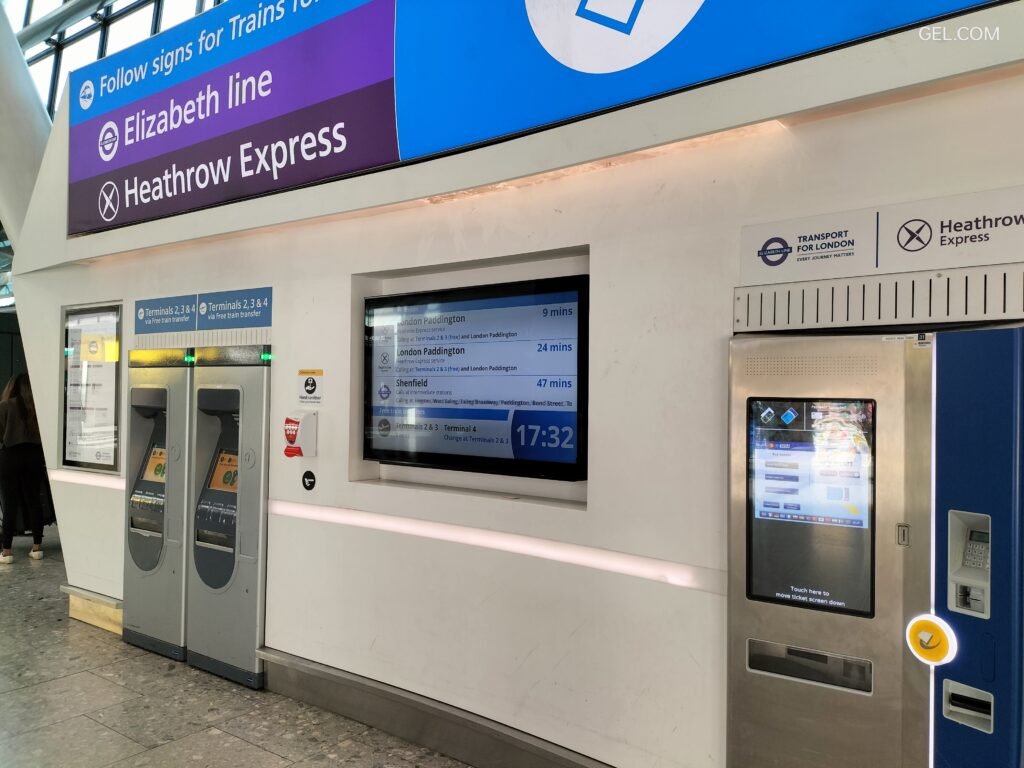
- Location: Upon exiting customs and entering the arrivals hall of your respective terminal (Terminals 2, 3, 4, or 5), you will find clearly signposted self-service ticket machines for the Heathrow Express, Elizabeth Line, and London Underground. These machines are usually located near the entrances to the train stations or in prominent areas of the arrivals hall.
- Functionality: These modern machines are multilingual and user-friendly. You can select your destination, choose your ticket type (single, return, or Travelcard for the Tube/Elizabeth Line), and pay using major credit or debit cards, including contactless payment. For Oyster cards, you can purchase a new card and top it up at these machines.
- Benefits:
- Convenience: No need to queue at a ticket office.
- Speed: Quick and efficient transaction process.
- Choice: Access to various ticket types and payment methods.
- Information: Machines often display fare information and journey times.
- Assistance: While the machines are designed for ease of use, staff are typically on hand nearby to offer assistance if you encounter any difficulties.
Which Option is Right for You?
The “best” way to get from Heathrow to Central London depends entirely on your priorities:
- Speed is paramount: Heathrow Express.
- Balance of speed and cost with direct connections: Elizabeth Line.
- Budget-conscious and direct to many central locations: London Underground (Piccadilly Line).
- Door-to-door convenience and comfort (budget allowing): Black Cab.
- Cost-effective door-to-door with app-based booking: Uber/Ride-sharing.
- Economical road travel, ideal for heavy luggage or specific destinations: National Express coach.
Whichever option you choose, Heathrow’s well-integrated transport network ensures a smooth and efficient journey into the vibrant heart of London. Planning ahead and understanding your options will allow you to select the perfect mode of transport to kickstart your London adventure.
For Information:- Read More
Other Posts Related to this article:-
- Best Way from Stansted, City, Luton & Southend Airports to London.
- Best Way from Gatwick Airport to London.
- What Travel Assistance in London

